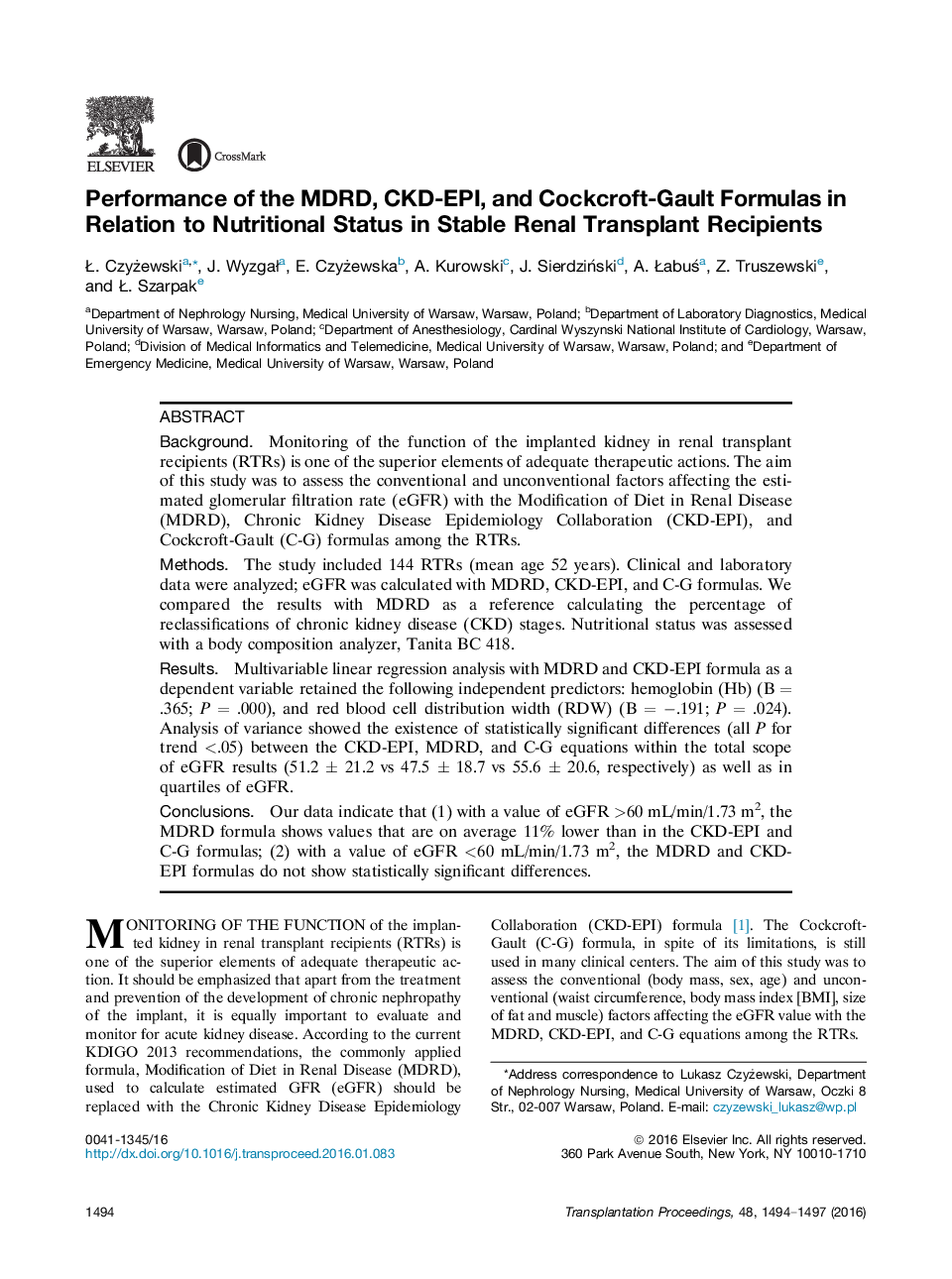| Article ID | Journal | Published Year | Pages | File Type |
|---|---|---|---|---|
| 4256060 | Transplantation Proceedings | 2016 | 4 Pages |
•We compared the Chronic Kidney Disease Epidemiology Collaboration (CKD-EPI) and Cockcroft -Gault (C-G) formulas with the Modification of Diet in Renal Disease (MDRD) as reference in calculating the percentage of reclassifications of chronic kidney disease (CKD) stages.•At the value of eGFR >60 mL/min/1.73 m2, the MDRD formula shows values that are on average 11% lower than with the CKD-EPI and C-G formulas.•At the value of eGFR <60 mL/min/1.73 m2, the MDRD and CKD-EPI formulas do not show statistically significant differences.
BackgroundMonitoring of the function of the implanted kidney in renal transplant recipients (RTRs) is one of the superior elements of adequate therapeutic actions. The aim of this study was to assess the conventional and unconventional factors affecting the estimated glomerular filtration rate (eGFR) with the Modification of Diet in Renal Disease (MDRD), Chronic Kidney Disease Epidemiology Collaboration (CKD-EPI), and Cockcroft-Gault (C-G) formulas among the RTRs.MethodsThe study included 144 RTRs (mean age 52 years). Clinical and laboratory data were analyzed; eGFR was calculated with MDRD, CKD-EPI, and C-G formulas. We compared the results with MDRD as a reference calculating the percentage of reclassifications of chronic kidney disease (CKD) stages. Nutritional status was assessed with a body composition analyzer, Tanita BC 418.ResultsMultivariable linear regression analysis with MDRD and CKD-EPI formula as a dependent variable retained the following independent predictors: hemoglobin (Hb) (B = .365; P = .000), and red blood cell distribution width (RDW) (B = −.191; P = .024). Analysis of variance showed the existence of statistically significant differences (all P for trend <.05) between the CKD-EPI, MDRD, and C-G equations within the total scope of eGFR results (51.2 ± 21.2 vs 47.5 ± 18.7 vs 55.6 ± 20.6, respectively) as well as in quartiles of eGFR.ConclusionsOur data indicate that (1) with a value of eGFR >60 mL/min/1.73 m2, the MDRD formula shows values that are on average 11% lower than in the CKD-EPI and C-G formulas; (2) with a value of eGFR <60 mL/min/1.73 m2, the MDRD and CKD-EPI formulas do not show statistically significant differences.
